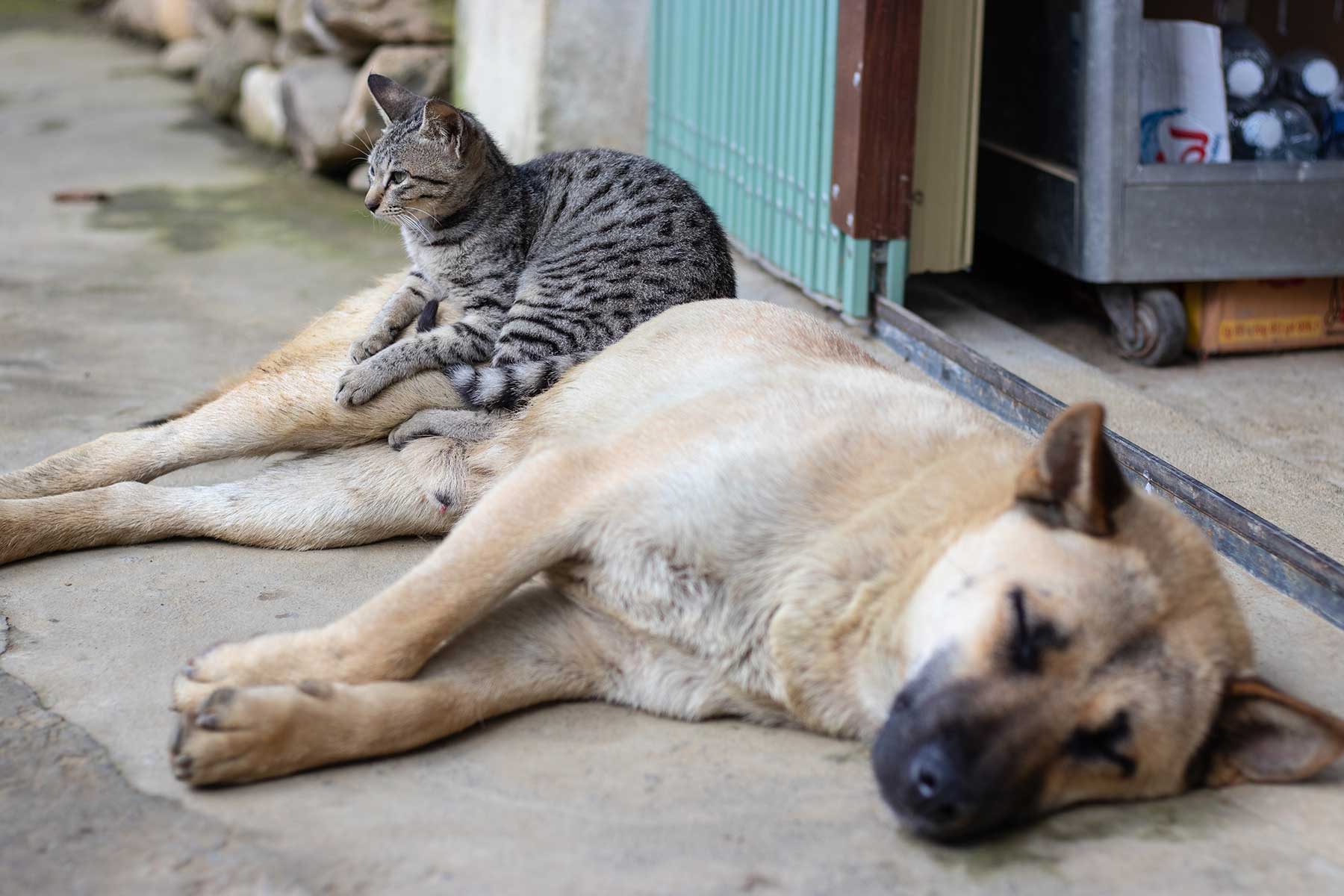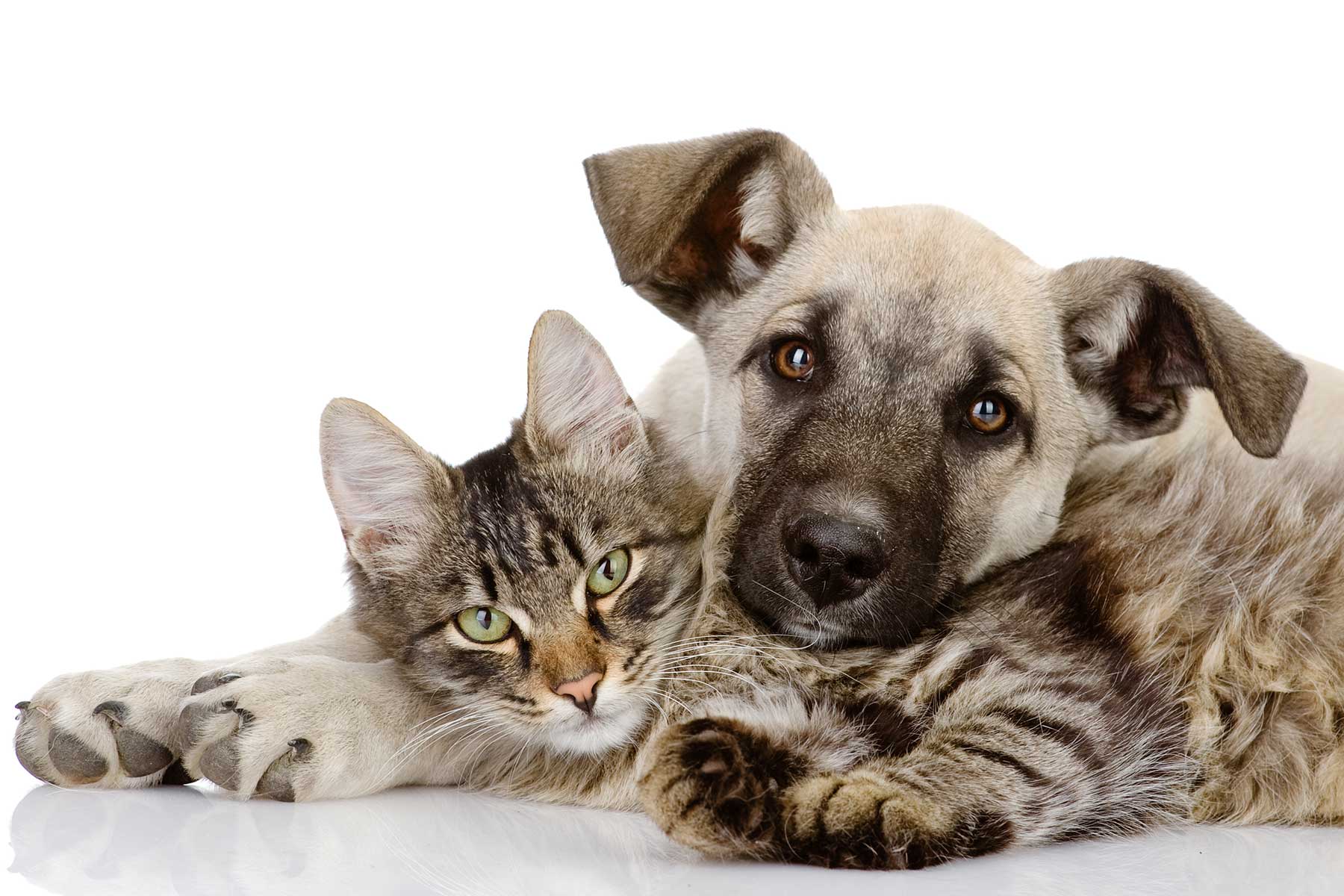Diabetes mellitus is a disease of the pancreas. This is a small but vital organ located near the stomach. It has two significant populations of cells. One group of cells produces the enzymes necessary for proper digestion. The other group, called beta-cells, produce the hormone insulin. Simply put, diabetes is a failure of the pancreatic beta cells to regulate blood sugar.
Diabetes is a disease of the pancreas. This is a small but vital organ located near the stomach. It has two significant populations of cells. One group of cells produces the enzymes necessary for proper digestion. The other group, called beta-cells, produce the hormone insulin. Simply put, diabetes is a failure of the pancreatic beta cells to regulate blood sugar.
Some people with diabetes take insulin shots, and others take oral medication. Is this true for dogs?
In humans, two types of diabetes have been discovered. Both types are similar in that there is a failure to regulate blood sugar, but the basic mechanisms of disease differ somewhat between the two groups. Almost all dogs with diabetes will require daily insulin injections to regulate their blood glucose.
Type I Diabetes results from total or near-complete destruction of the beta-cells. This results in a failure to produce adequate insulin and the inability to thereby get glucose from the blood stream into cells.
Type II Diabetes results from insulin resistance initially. The pancreas is producing enough insulin, though due to various insulin resistance factors (obesity, inflammatory disease, cushings disease to name a few), the insulin is blocked in its action to take glucose from the blood stream and into cells. Over time the pancreas will become exhausted and cease to produce insulin at all, which exacerbates the problem. Most Dogs are type I diabetics, though some type I dogs may suffer type II factors like urinary tract or dental infection.
Why is insulin so important?
The role of insulin is much like that of a gatekeeper: in effect, it stands at the surface of body cells and opens the door, allowing glucose to leave the blood stream and pass inside the cells. Glucose is a vital substance that provides much of the energy needed for life, and it must work inside the cells. Without an adequate amount of insulin, glucose is unable to get into the cells. It accumulates in the blood, setting in motion a series of events that can ultimately prove fatal.
When insulin is deficient, the cells become starved for a source of energy. In response to this, the body starts breaking down stores of fat and protein to use as alternative energy sources. As a consequence, the dog eats more; thus, we have weight loss in a dog with a ravenous appetite. The body tries to eliminate the excess glucose by excreting it in the urine. However, glucose (blood sugar) attracts water resulting in the production of a large amount of urine. To avoid dehydration, the dog drinks more and more water. Thus, we have the four classical signs of diabetes:
- Increased water consumption
- Increased urination
- Increased appetite
- Weight loss
How is diabetes diagnosed?
The diagnosis of diabetes is based on three criteria: the clinical signs, the presence of a persistently high level of glucose in the blood stream (hyperglycemia), and the presence of glucose in the urine (glucosuria).
The normal level of glucose in the blood is 4.4-6.6 mmol/L. However, diabetes is the only common disease that will cause the blood glucose level to rise above 22 mmol/L. Some diabetic dogs will have a glucose level as high as 44 mmol/L, although most will be in the range of 22-33 mmol/L at the time of diagnosis.
To keep the body from losing glucose, the kidneys will reclaim glucose from filtered blood, up to a certain level. This means that dogs with a normal blood glucose level will not have glucose in the urine. Diabetic dogs, however, have excessive amounts of glucose in the blood, so it will be present in the urine.
What are the implications for you and your dog?
For the diabetic dog, one reality exists: blood glucose cannot be normalised without treatment. Although the dog can go a day or so without treatment and not have a crisis, treatment should be looked upon as part of the dog’s daily routine. Treatment almost always requires some dietary changes and the administration of insulin.
As for you, the owner, there are two implications: financial commitment and personal commitment.
When your dog is well regulated, the maintenance costs are reasonable but not massive. The special diet, insulin, and syringes are not hugely expensive. However, the financial commitment may be significant during the initial regulation process and if complications arise.
Initially, your dog will be hospitalised for a few days to deal with the immediate crisis and to begin the regulation process. The “immediate crisis” is only great if your dog is so sick that it has stopped eating and drinking for several days. Dogs in this state, called ketoacidosis may require up to a week of hospitalisation with intensive medical treatment and laboratory testing. Otherwise, the initial hospitalisation may be only for a day or two for basic tests and to begin treatment. After initial stabilisation, your dog goes home with you so that medications can be administered in the home environment. At first, return visits are required every week or two to monitor progress. It may take a couple of months or more to achieve good regulation.
The financial commitment may again be significant if complications arise. Your veterinarian will work with you to try and achieve consistent regulation, but some dogs are difficult to keep regulated. It is important that you pay close attention to all instructions relating to administration of medication, diet, and home monitoring. Another complication that can arise is hypoglycemia, or low blood sugar, which can have serious consequences. This will be explained in subsequent paragraphs.
Your personal commitment to treating your dog is very important in maintaining regulation and preventing complications. Most diabetic dogs require insulin injections once or twice daily. They must be fed the same food in the same amount on the same schedule every day. If you are out of town, your dog must receive proper treatment while you are gone. These factors should be considered carefully when your pet has been diagnosed with diabetes mellitus.
Treatment
What is involved in treatment?
Consistency is vital to proper management of the diabetic dog. Your dog needs consistent administration of medication, consistent feeding, consistent exercise and a stable, stress-free lifestyle.
Diet and feeding regime
The first step in treatment is to alter your dog’s diet. Diets high in protein and fibre are preferred in dogs because they are generally lower in sugar and slower to be digested. This means that the dog does not have to process a large amount of sugar at one time. Additionally, the fibre may help stimulate insulin secretion in Type II diabetes. Your veterinarian will discuss specific diet recommendations for your pet’s needs.
Your dog’s feeding routine is also important. The preferred way is to feed twice daily, just before each insulin injection. If your dog is currently eating on a free choice basis, it is important to try and make the change. If a two-meals-per-day feeding routine will not work for you, it is still important to find some way to accurately measure the amount of food that is consumed.
Insulin injections
The foundation for regulating blood glucose in a diabetic is the administration of insulin by injection. Many people are initially fearful of giving insulin injections. If this is your initial reaction, consider these points:
1. Insulin does not cause pain when it is injected.
2. The injections are made with very tiny needles that your dog hardly feels.
3. The injections are given just under the skin in areas in which it is almost impossible to cause damage to any vital organ.
Please do not decide not to treat your dog with insulin until we have demonstrated the injection technique. You may be pleasantly surprised at how easy it is and how well your dog tolerates the injections.
How is insulin provided?
Insulin comes in an airtight bottle that is labeled with the insulin type and the concentration. It is important to make sure you understand how much insulin to give. Vets and nurses will always demonstrate this for you and all insulin will have clear dosing instructions on the label.
Before using the insulin, mix the contents. Be sure to roll it gently between your hands, not shake it. The reason for this is to prevent damaging the fragile insulin molecules. Some types of insulin used in dogs have a strong tendency to settle out of suspension. If it is not handled properly, it will not mix well and dosing will be inaccurate. Therefore, the trick is to move/ roll/ rotate the bottle enough to mix it without shaking. When you have finished mixing the insulin, turn the bottle upside down to see if any white powder adheres to the bottom of the bottle. If so, more mixing is needed.
Insulin is a hormone that will lose its effectiveness if exposed to direct sunlight or high temperatures. Once open, a bottle of insulin has a shelf life of 6 -8 weeks and will need to be replaced accordingly. It should be kept in the refrigerator, but it should not be frozen. If you have any doubt about your pet’s insulin and how it was stored, it is safer to replace it instead of risking using ineffective insulin. Insulin is safe as long as it is used as directed, but it should be kept out of the reach of children.
How should you draw up the Insulin?
Have the needle and syringe, insulin bottle, and dog ready. Then, follow these steps:
1. Remove the cap from the needle, and draw back the plunger to the appropriate dose level.
2. Carefully insert the needle into the insulin bottle.
3. Inject air into the bottle. This prevents a vacuum from forming within the bottle.
4. Withdraw the correct amount of insulin into the syringe according to the label.
Before injecting your dog with the insulin, check that there are no air bubbles in the syringe. If you get an air bubble, draw twice as much insulin into the syringe as you need. Then withdraw the needle from the insulin bottle and tap the barrel of the syringe with your fingernail to make the air bubble rise to the tip of the syringe. Gently and slowly expel the air bubble by moving the plunger upward.
When this has been done, check that you have the correct amount of insulin in the syringe.
How do you inject the Insulin?
The steps to follow for injecting insulin are:
Feed your dog the diet your vet has advised. Ensure your dog is eating before giving any insulin.
Hold the syringe in your right hand (switch hands if you are left-handed).
Have someone hold your dog while you pick up a fold of skin from somewhere along your dog’s back in the “scruff” region with your free hand. Try to pick up a slightly different spot each day.
Gently but firmly push the very sharp, very thin needle all the way through your dog’s skin. This should be easy and painless. However, take care to push the needle through only one layer of skin and not into your finger or through two layers of skin. The latter will result in injecting the insulin onto your dog’s haircoat or onto the floor. The needle should be directed parallel to the backbone or angled slightly downward.
Gently draw back on the plunger to ensure there is no blood in the hub of the needle. To inject the insulin, place your thumb on the plunger and push it all the way into the syringe barrel. If blood is noticed, simply remove the syringe and start the process again.
Withdraw the needle from your dog’s skin. Immediately place the needle guard over the needle and discard the needle and syringe into the sharps container provided. Stroke and praise your dog to reward it for being good.
Once the sharps container is full it can be brought back to your veterinarian for disposal as appropriate for medical waste and a new sharps container purchased.
Although the above procedures may at first seem complicated and somewhat overwhelming, they will very quickly become second nature. Your dog will soon learn that once or twice each day they will have a small injection. In most cases, a reward of stroking and the presence of food, results in a happy dog that will often ignore the injection and continue eating their meal.
Monitoring
Is monitoring needed?
Monitoring is vital over time, as it allow the diabetes to be well controlled. This means less complications, less cost and a happier healthier dog.
Home monitoring
Try to be aware of your dog’s appetite, weight, water consumption, and urine output. You should be feeding a consistent amount of food each day, which will allow you to be aware of times when your dpg’s appetite is different from normal. You should weigh your dog at least monthly. It is best to use the same scales each time.
You should develop a way to measure water consumption. The average dog should drink no more than 60ml/ kg body weight in any 24 hour period (eg 5kg dog would normally drink up 300ml in a day). Since this is variable from one dog to another, keeping a record of your dog’s water consumption for a few weeks will allow you to establish what is normal for your dog.
Any significant change in your dog’s food intake, weight, water intake, or urine output is an indicator that the diabetes may not be well controlled. We should see your dog at that time.
Monitoring of blood glucose
At least at 1st, when we are working out insulin requirements, we will admit dogs to hospital for the day and check the blood sugar at regular interval. This creates a blood glucose curve, where we can see the high and low points and how quickly the blood sugar rises and falls through the day.
Blood glucose curves are a useful way of monitoring the finer points of diabetes control and can be done as frequently as weekly if the diabetes control is not great at the time, or as infrequently as every 3-6 months if control has been very stable.
Sometimes pet owners will be sufficiently confident and dogs will be sufficiently calm that blood glucose curves can be done at home, rather than in hospital.
There is also a device that can sometimes be fitted which will provide real time ongoing blood glucose levels over a 1-2 week period (for as long as the batteries last and as long as the device stays on the skin surface).
If you are interested in any form of home monitoring, please ask our vets. We may even recommend this form of monitoring to you, depending on what we think will work best.
Does hypoglycemia occur in dogs?
Hypoglycemia means low blood sugar. If the blood glucose level is below 2.2mmol/L, it can be life threatening. Hypoglycemia generally occurs under two conditions:
1. The relative insulin dose is too high. The most common causes for the insulin dose to be too high on a particular day are due to a reduction in food intake and/or an increase in exercise or activity. It is vitally important that the amount of food and exercise your dog receives each day is kept constant. It is necessary for dogs to eat before they receive their insulin injection; because once the insulin is administered it can’t be removed from the body. If your dog does not eat, skip that dose of insulin. Always remember that it is better in the short term for the blood sugar to be too high than too low.
Although most dogs will require the same dose of insulin for long periods of time, it is possible for the dog’s insulin requirements to change over time; hence the need for regular checkup.
2. Too much insulin is given. This can occur because the insulin was not properly measured in the syringe or because two doses were given. You may forget that you gave it and repeat it, or two people in the family may each give a dose. A chart to record insulin administration will help to prevent the dog being treated twice.
The most likely time that a dog will become hypoglycemic is the time of peak insulin effect (5-8 hours after an insulin injection). When the blood glucose is only mildly low, the dog will act very tired and unresponsive. You may call it and get no response. Within a few hours, the blood glucose will rise, and your dog will return to normal. Since many dogs sleep a lot during the day, this important sign is easily missed. Watch for any subtle signs of hypoglycemia. It is the first sign of impending problems. If you see it, please bring your dog in for blood glucose testing.
If your dog is slow to recover from this period of lethargy, you should give it honey (one tablespoon by mouth). If there is no response within fifteen minutes, contact your veterinarian immediately for further instructions.
If severe hypoglycemia occurs, a dog may have seizures or lose consciousness. Ultimately, untreated hypoglycemia will lead to coma and death. This is an emergency that can only be reversed with intravenous administration of glucose. If it occurs during office hours, take your dog to the veterinarian’s office immediately. If it occurs after clinic hours, call your veterinarian’s emergency phone number for instructions.











